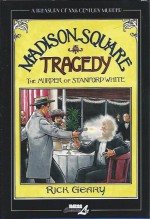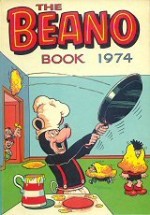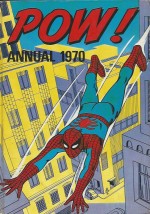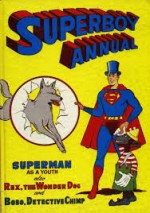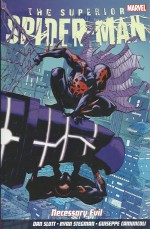
By Hal Foster (Fantagraphics Books)
ISBN: 978-1-60699-484-9
Probably the most successful comic strip fantasy ever produced, Prince Valiant in the Days of King Arthur launched on February 13th 1937, a luscious full-colour Sunday page offering a perfect realm adventure and romance. Year by year, in real time, the strip followed the exploits of a refugee boy driven by invaders from his ancestral homeland in Scandinavian Thule who grew up to roam the world and rose to a paramount position amongst the mightiest heroes of fabled Camelot.
As crafted by sublime master draftsman Harold “Hal†Foster, the princeling matured to clean-limbed manhood in a heady sea of exotic wonderment; visiting far-flung lands and siring a dynasty of equally puissant heroes whilst captivating and influencing generations of readers and thousands of creative types in all the arts.
There have been films, animated series and all manner of books, toys, records, games and collections based on the strip – one of too few to have lasted from the thunderous 1930s to the present day (over 4000 episodes and still forging ever onward) – and even in these declining days of the newspaper narrative strip as a viable medium it still claims over 300 American papers as its home. It has even made it into the very ether with an online edition.
Foster produced the strip, one spectacular page a week until 1971, when he began to ease up on his self-appointed workload. With the syndicate’s approval, after auditioning such notables as Wally Wood and Gray Morrow, Big Ben Bolt illustrator John Cullen Murphy was chosen to draw the feature. Foster continued as writer and layout designer until 1980, after which he fully retired and Murphy’s son assumed the writer’s role.
In 2004 the senior Cullen Murphy also retired (he died a month later on July 2nd) and the strip has soldiered on under the extremely talented auspices of writer Mark Schultz and artists Gary Gianni and Tom Yeates.
This seventh gloriously oversized full-colour hardback volume reprints the strips from January 7th 1945 to 29th December 1946 during which time his celebrated yet rarely seen “Footer strip†The Mediaeval Castle was brought to conclusion.
Because of wartime paper rationing, newspapers across the country needed to fill their reduced page counts carefully. To assist their clients the syndicate dictated format-changes to most of their strip properties and Prince Valiant began to appear with an unrelated (and therefore optional) second feature, which individual papers could opt to omit according to their local space considerations.
Apparently the three-panel-per week saga starring the 11th century family of Lord and Lady Harwood, their young sons Arn and Guy and teenaged daughter Alice – a feudal pot-boiler so popular that it spawned a couple of relatively contemporary book collections – wasn’t dropped by a single paper throughout its 18-month run from April 23rd 1944 to 25th November 1945, but Foster was happy to return to one epic per full page once the newsprint restrictions were lifted.
In this volume the strip sees a less than historical Christmas celebration and harsh winter turn into a fruitful spring as the bitter rivalry with neighbour Sir Gregory slowly mends, thanks in no small part to a hostage swap of their first-born sons and Alice’s romantic inclinations towards young and dashing Hubert Gregory. Of course it doesn’t hurt that their quarrelsome fathers have been called away Crusading…
P. Craig Russell’s introductory essay ‘Jack Kirby, Hal Foster and Me’ expresses and describes Prince Valiant‘s influence on one of today’s most lauded creators, after which the magnificent main saga then resumes.
What Has Gone Before: Despite his many exploits and triumphs, restless Valiant is haunted by visions of Queen Aleta of The Misty Isles, whom he believes has bewitched him, utterly unaware that she saved his life not once but twice.
Val pays an adventure-filled to his father King Aguar – whom he has restored to overlordship of Thule, eradicating assorted bandit bands, being shipwrecked and cast away before foiling a plot to oust the aged monarch.
Once home, however, a hunting accident almost kills him and, laid up, he plays Cupid for a crippled artist and a Viking’s daughter. Once, barely recovered, he then repulses an invasion by barbarian Finns.
Never a man for peace and indolence, Val then determines to free himself of Aleta’s bewitching spell. Returning to Camelot the Prince enlists the aid of Sir Gawain and they promptly set off across Europe towards Misty Isles. In Germany they are attacked by barbaric Goths, before taking ship in Rome and being shipwrecked. The squire Beric and now amnesiac Val are marooned whilst Gawain is captured for ransom by an ambitious Sicilian noble.
As Beric sacrifices himself to save his Prince’s life, Valiant finally recovers his wits and lands on the extremely hostile Misty Isles…
Aleta, spellbinder of Val’s nightmares, has recently been ill-used by fate. Never the supernatural monster he believed, she was, however, in dire straits with a flock of suitors and her own courtiers pressing her to marry immediately and produce an heir. So it was with mixed emotions that she saw the boy she had saved burst in, snatch her up and flee the Isles with her as his rather uncomplaining prisoner.
Val, wounded, exhausted but triumphant, now has the cause of all his woes chained and at his mercy as he turns toward England…
After crossing a vast desert with pursuers hard on their heels the couple reach the port of Tobruch, where the local despot tries to buy Val’s hard-won prize. Somehow his hatred towards her has become something else and soon he is protecting her from bandits and numerous other perils.
She returns the favour when he is injured: nursing him through fever and even convincing a band of roving Tuaregs to escort them across Arabia. By the time the couple reach Bengasi Val is again her slave, but only realises it after a recuperative stay in the palace of the Sultan. It’s at that moment that Donardo, Robber Emperor of Saramand strikes, stealing Aleta and setting his band of brigands upon Valiant.
The villain’s biggest mistake is not ensuring Val is dead. Alone and weaponless, the Arthurian knight relentlessly tracks the thieves and deals with them mercilessly before reaching Donardo’s citadel moments too late to exact full vengeance.
Unable to liberate Aleta, he instead foments a full scale war between the Robber Emperor and his neighbours, each as wicked and untrustworthy as Aleta’s abductor…
Barbaric and time-consuming, the conflict rages, with each king secretly seeking to double-cross his temporary ally. However, whilst Val is riding a tiger by acting as the warlord of the attacking forces, Aleta takes her fate into her own hands and escapes from Donardo’s castle and is (relatively) safe when Saramand is sacked and the Emperor meets his long-delayed fate…
Leaving the devastated city, Val, reunited with his love and his legendary Singing Sword, travels to Rome, arriving just as Vandal general Genseric attacks the Eternal City. Befriended by Genseric’s employer, the former Empress Eudoxia, Val and Aleta are married there before again trying for England. To do so, they steal a ship from the victorious, blood-crazed and very drunk Vandals, heading to the relative safety of Lyon.
As they quit the vessel, a slave implores Val to free him, and the scribe Amurath joins their party. He is clearly quite taken with Aleta’s new handmaiden Cidi…
With Rome fallen every vestige of civilisation – such as safe roads – has ended and the party is soon under attack by bandits. These Val can handle, but he has no conception of the peril he faces when Cidi develops a lethally obsessive fascination for him…
When besotted Amurath stops the handmaiden from poisoning Aleta, Cidi responds by committing suicide and the heartbroken scribe changes. As the newlyweds enter Paris, he schemes to have them shamed and killed by the noble Thane Roth as they stay in his palace…
The freed slave had underestimated Aleta however, and the sinister plan fails…
As Val and Aleta commence the last leg of their journey they meet and employ a tempestuous fire-haired northern titan named Katwin. She will be the Lady’s handmaiden in England…
With little trouble the party reach Camelot where Aleta soon becomes a Court favourite – despite a few hilariously compromising moments before she is formally introduced to Arthur. She soon sets tongues wagging by riding and hunting just like man…
The scandals continue after Valiant and others are despatched on a mission against the Saxons. Refusing to be separated from her husband, the headstrong Queen of the Misty Isles impersonates a knight and joins the war-party…
Soon after, whilst hunting with Val and Gawain, she charms a band of outlaws led by charismatic Hugh-the-Fox when they are all captured for ransom. Brokering a peace and pardon from Arthur she turns the woodsmen into scouts against the ever-encroaching Jutes and Saxons of high king Horsa.
After spectacularly repulsing the invaders with “his†wood scouts, Val’s next adventure pits him against the treacherous Sir Modred, who seeks power by exposing Sir Launcelot‘s relationship with Queen Guinevere. To save the monarch’s shame, Aleta impetuously confesses to being the knight’s actual lover… just as Val returns from a mission and gets the wrong idea…
The outraged, betrayed Prince flees Camelot and only loyal Katwin is able to bring him to his senses. Reunited and both penitent, the newlyweds decide to spend winter in Thule, where Aguar can get to know his new daughter-in-law. It’s not a happy homecoming, however, and as the barely-rested Val is forced to quell a potential rebellion in Overgaard another brews in the fiefdom of Earl Jon.
Amidst the dour, grim-minded warriors, bright-and-breezy Aleta struggles to win the favour of the King – until she shows him another way to deal with his subjects’ dissatisfaction…
To Be Continued…
This volume also includes a stellar glimpse of the storyteller’s commercial endeavours in magazines and advertising in Brian M. Kane’s informative essay ‘Foster the Illustrator’ and a discussion of the strip’s amazing, groundbreaking co-star in ‘Aleta: Water Nymph of the Misty Isles’ to wrap up the full immersion in the myriad splendours of a long-gone age…
Rendered in a simply stunning panorama of glowing visual passion and precision, Prince Valiant is a constantly onrushing rollercoaster of rousing action, exotic adventure and grand romance; mixing glorious human-scaled fantasy with dry wit, broad humour with shatteringly dark violence.
Beautiful, captivating and utterly awe-inspiring, this is a masterpiece of fiction: a never-ending story no one should miss. If you have never experienced the intoxicating grandeur of Foster’s magnum opus these magnificent, lavishly substantial deluxe editions are the best way to do so and will be your portal to an eye-opening world of wonder and imagination…
Prince Valiant © 2012 King Features Syndicate. All other content and properties © 2011 their respective creators or holders. All rights reserved.


